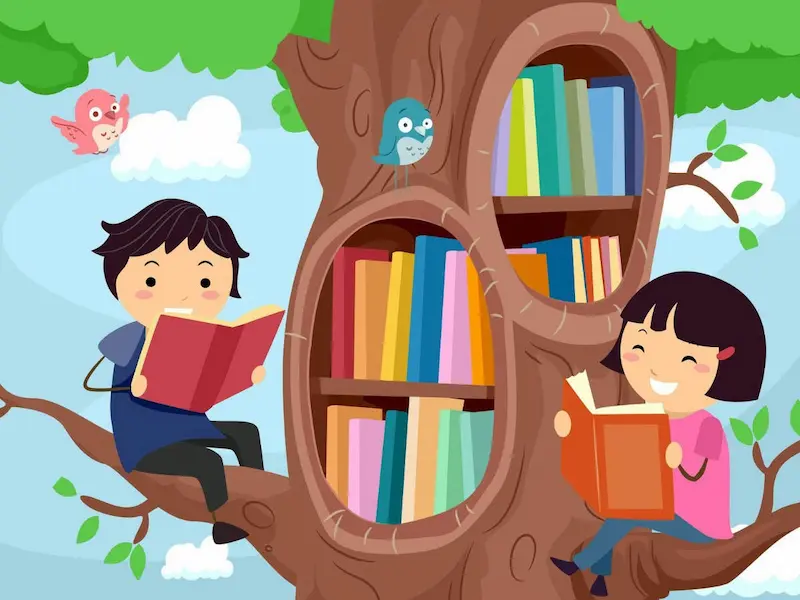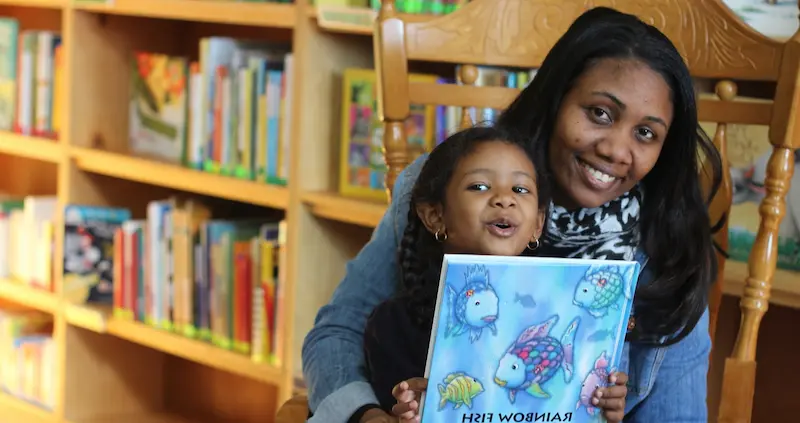In today’s fast-paced digital world, cultivating a love for reading among children holds immense significance. Not only does reading enhance cognitive abilities and language skills, but it also sparks creativity, empathy, and a thirst for knowledge from an early age. Encouraging reading in children not only opens doors to new worlds but also develops critical thinking and problem-solving skills essential for their growth and success in various aspects of life.
This article aims to curate a list of eight exceptional books catering to children of various age groups. Each book offers unique experiences, life lessons, and captivating storytelling that make them essential reads for kids. Additionally, we’ll explore the benefits of diverse representation in literature, tips for building a reading routine, and the joy of reading aloud to children. By delving into these aspects, we hope to underscore the profound impact literature can have on a child’s holistic development, from fostering empathy to honing communication skills.
Table of contents
- 1: “Where the Wild Things Are” by Maurice Sendak
- 2: “Charlotte’s Web” by E.B. White
- 3: “The Giving Tree” by Shel Silverstein
- 4: “Matilda” by Roald Dahl
- 5: “The Chronicles of Narnia” by C.S. Lewis
- 6: “Oh, the Places You’ll Go!” by Dr. Seuss
- 7: “Harry Potter Series” by J.K. Rowling
- 8: “The Little Prince” by Antoine de Saint-Exupéry
- Benefits of Diverse Representation
- Building a Reading Routine
- The Joy of Reading Aloud
- Conclusion
- Frequently Asked Questions (FAQ’S)
These are the 8 must-read favorite books for children:
1: “Where the Wild Things Are” by Maurice Sendak
A. Brief Introduction
Maurice Sendak’s timeless classic, “Where the Wild Things Are,” takes young readers on an imaginative journey with Max, a mischievous boy in a world of his creation, filled with wild creatures. The vivid illustrations and imaginative narrative captivate children, transporting them into Max’s whimsical world where they can explore their own creativity and imagination.
B. Key Takeaways
- Encourages imagination and creativity.
- Teaches about emotions and the power of storytelling.
- Illustrates the importance of home and belonging.
C. Why it’s a Must-Read
This book’s enchanting illustrations and simple yet profound storytelling resonate with children and adults alike, making it a must-read for fostering creativity and understanding emotions. Its exploration of imagination and emotions serves as a gateway for children to express themselves freely and understand the nuances of their feelings in a safe, relatable context.

2: “Charlotte’s Web” by E.B. White
A. Brief Introduction
E.B. White’s “Charlotte’s Web” follows the unlikely friendship between a pig named Wilbur and a wise spider named Charlotte as they navigate life on a farm. The story beautifully captures the essence of friendship, loyalty, and the circle of life through the lens of endearing animal characters, captivating young readers with its heartfelt narrative.
B. Key Takeaways
- Celebrates friendship, compassion, and selflessness.
- Introduces themes of life, death, and the circle of life in a gentle manner.
- Teaches valuable lessons about empathy and kindness.
C. Why it’s a Must-Read
This heartwarming tale not only captivates young readers with its engaging narrative but also imparts important lessons about friendship, empathy, and the beauty of life’s cycles. Its ability to address profound themes in a sensitive and relatable manner makes it a timeless classic that resonates with readers across generations.
3: “The Giving Tree” by Shel Silverstein
A. Brief Introduction
Shel Silverstein’s “The Giving Tree” tells the story of a selfless tree that gives everything it has to make a boy happy throughout his life. The simple yet powerful narrative and evocative illustrations make it a compelling read that prompts contemplation on the nature of love, sacrifice, and relationships.
B. Key Takeaways
- Highlights the essence of selflessness and unconditional love.
- Sparks discussions on sacrifice and gratitude.
- Encourages reflection on the value of nature and relationships.
C. Why it’s a Must-Read
This beautifully illustrated book prompts meaningful conversations about love, giving, and the balance between taking and giving in relationships, making it a must-read for all ages. Its poignant message resonates deeply, encouraging readers to contemplate the essence of true happiness and fulfillment.
4: “Matilda” by Roald Dahl
A. Brief Introduction
Roald Dahl’s “Matilda” introduces readers to a young girl with extraordinary intelligence who discovers her hidden talents and stands up against adversity. The empowering narrative celebrates intelligence, resilience, and the courage to challenge unjust authority, inspiring children to embrace their unique abilities.
B. Key Takeaways
- Empowers children to embrace their uniqueness and intelligence.
- Advocates for the power of knowledge and education.
- Encourages resilience and determination in the face of challenges.
C. Why it’s a Must-Read
“Matilda” celebrates the strength of character and the importance of standing up for oneself, making it an empowering and inspiring read for children navigating their own journeys. Its emphasis on resilience, intelligence, and justice resonates with young readers, instilling confidence and a sense of agency.
5: “The Chronicles of Narnia” by C.S. Lewis
A. Brief Introduction
C.S. Lewis’s magical series, “The Chronicles of Narnia,” transports readers to a fantastical world filled with talking animals, epic adventures, and moral allegories. The immersive storytelling and richly imagined universe captivate readers, inviting them to explore themes of bravery, loyalty, and morality.
B. Key Takeaways
- Explores themes of bravery, loyalty, and sacrifice.
- Sparks imagination and encourages critical thinking.
- Illustrates the battle between good and evil in an accessible way.
C. Why it’s a Must-Read
This enthralling series captivates readers with its rich storytelling and allegorical elements, fostering imagination and moral understanding in young minds. Its ability to weave profound moral lessons within thrilling adventures makes it a perennial favorite among children and adults alike.
6: “Oh, the Places You’ll Go!” by Dr. Seuss
A. Brief Introduction
Dr. Seuss’s “Oh, the Places You’ll Go!” is a whimsical and motivational book that inspires readers to embrace life’s journey, overcome challenges, and seize opportunities. The playful rhymes and vibrant illustrations create a delightful reading experience that resonates with readers of all ages.
B. Key Takeaways
- Encourages resilience, perseverance, and optimism.
- Empowers children to dream big and embrace change.
- Offers valuable life lessons applicable at any age.
C. Why it’s a Must-Read
This uplifting and inspiring book serves as a perfect gift for children embarking on new adventures, offering timeless wisdom and encouragement. Its universal themes of resilience, optimism, and embracing life’s journey make it a cherished companion for individuals navigating various life transitions.
7: “Harry Potter Series” by J.K. Rowling
A. Brief Introduction
J.K. Rowling’s iconic “Harry Potter” series follows the magical journey of a young wizard, Harry Potter, as he navigates the wizarding world, battles dark forces, and discovers the power of love and friendship. The series has captured the hearts and imaginations of readers worldwide, weaving a spellbinding narrative filled with themes of bravery, friendship, and the triumph of good over evil.
B. Key Takeaways
- Explores themes of friendship, bravery, and the battle between good and evil.
- Teaches the value of empathy and standing up for what’s right.
- Fosters imagination and a sense of wonder.
C. Why it’s a Must-Read
The “Harry Potter” series has captured the hearts of millions, offering a captivating narrative that instills important values and encourages readers to embrace the magic within themselves. Its portrayal of friendship, bravery, and the triumph of good over evil continues to resonate with readers, making it a timeless and beloved series.
8: “The Little Prince” by Antoine de Saint-Exupéry
A. Brief Introduction
Antoine de Saint-Exupéry’s “The Little Prince” is a philosophical tale about a young prince’s journey through different planets and his encounters with various characters, offering profound life lessons. The book’s poetic storytelling and allegorical nature invite readers to ponder deeper meanings and themes about life, love, and human relationships.
B. Key Takeaways
- Explores themes of love, friendship, and the complexities of human nature.
- Encourages introspection and a deeper understanding of life’s mysteries.
- Emphasizes the importance of seeing with the heart rather than just the eyes.
C. Why it’s a Must-Read
This timeless classic enchants readers with its poetic storytelling and thought-provoking messages, inviting contemplation and reflection on life’s deeper meanings. Its ability to provoke introspection and inspire readers to perceive the world with empathy and emotional depth makes it a cherished book for readers of all ages.
Benefits of Diverse Representation
A. Promoting Inclusivity
Books that represent diverse characters and cultures help children relate to different perspectives, fostering empathy and understanding of the world’s diversity. By showcasing characters from various backgrounds, literature promotes inclusivity and validates the experiences of all individuals.
B. Expanding Horizons
Exposing children to diverse literature broadens their worldview, breaks stereotypes, and encourages acceptance and appreciation of various cultures and identities. By embracing diverse stories, children gain a deeper understanding and respect for the richness of human experiences.
C. Encouraging Empathy
Diverse representation in literature nurtures empathy by allowing children to step into the shoes of characters from different backgrounds. This fosters an understanding of diverse viewpoints, promoting empathy and compassion towards individuals with varied life experiences.
Building a Reading Routine
A. Setting Reading Time
Establishing a regular reading schedule encourages consistency and makes reading an integral part of a child’s daily routine. By allocating specific times for reading, children develop a habit that promotes literacy and a lifelong love for books.
B. Creating a Cozy Reading Corner
Designating a comfortable and inviting space for reading enhances the reading experience and makes it more enjoyable for children. A cozy reading corner equipped with cushions, blankets, and shelves filled with books creates a conducive environment for immersive reading experiences.
C. Choosing the Right Atmosphere
Creating a peaceful and distraction-free environment fosters focus and concentration, allowing children to immerse themselves fully in the joy of reading. Minimizing distractions and providing a calm atmosphere encourages children to engage deeply with books and explore their imagination.
The Joy of Reading Aloud
A. Bonding with Children
Reading aloud to children not only improves literacy skills but also strengthens the bond between parents, caregivers, and children through shared experiences. Shared reading sessions create opportunities for meaningful interactions and conversations, fostering a deeper connection between adults and children.
B. Developing Language Skills
Listening to stories read aloud enhances children’s language development, vocabulary, and comprehension, laying the foundation for strong literacy skills. By hearing the rhythm and cadence of language during read-aloud sessions, children expand their linguistic abilities and develop a love for words and storytelling.
C. Fostering a Love for Stories
Engaging in read-aloud sessions introduces children to the joy of storytelling and sparks their interest in books. The interactive nature of reading aloud cultivates a love for stories, igniting children’s imagination and curiosity about the world depicted in books.
Conclusion
In conclusion, introducing children to a diverse range of books not only fosters a love for reading but also nurtures their emotional intelligence, empathy, and imagination. The curated list of must-read books offers timeless tales that entertain, inspire, and impart valuable life lessons. Additionally, promoting diverse representation in literature and incorporating reading routines and read-aloud sessions into a child’s daily life can significantly enrich their learning journey and overall development.
By embracing the power of literature and storytelling, we pave the way for children to become empathetic, imaginative, and open-minded individuals equipped to navigate the complexities of the world around them.
To get your hands on more educational and free resources on coding for kids, robotics for kids, financial education for kids, etc., do check out the BrightCHAMPS Page now!
Frequently Asked Questions (FAQ’S)
A1. To encourage your child to read, create a reading-friendly environment at home by having a variety of books easily accessible. Set aside dedicated reading times, read aloud to them, and allow them to choose books that interest them. Additionally, lead by example—let your child see you reading regularly.
A2. E-books can be as effective as physical books for children, as both formats offer unique advantages. E-books often incorporate interactive features that can engage young readers, while physical books provide a tactile experience. The key is to balance both formats based on the child’s preferences and needs.
A3. When choosing books for a child with special needs, consider their interests, abilities, and any specific accommodations they may require. Look for books with simple language, engaging visuals, or adaptations such as braille or audio books. Consulting with educators or specialists can also provide valuable guidance.
A4. Reading to newborns promotes bonding, stimulates brain development, and introduces them to language patterns and sounds. It helps in building listening skills, fostering a love for books, and creates a comforting routine that aids in their overall development.
A5. If a child is resistant to reading, it’s crucial to approach it with patience and creativity. Try finding books aligned with their interests or hobbies, make reading a fun and interactive experience, and offer choices in selecting reading materials. Avoid pressure and instead focus on making reading enjoyable and rewarding. Additionally, consider exploring audiobooks or other alternative methods of storytelling to capture their interest.


 We are an army of educators and passionate learners from BrightChamps family, committed to providing free learning resources to kids, parents & students.
We are an army of educators and passionate learners from BrightChamps family, committed to providing free learning resources to kids, parents & students.














